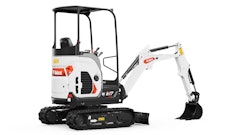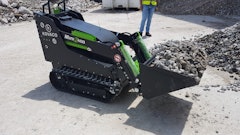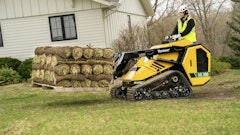Thanks to their versatility, compact utility tractors (CUTs) are a staple in the landscape industry. Just as versatile as the tasks CUTs can complete are the number of sizes available to contractors. So how do you know what size is right for your operation?
Every manufacturer categorizes CUTs differently but most split them into two categories: standard compacts (general range of 30 hp and more) and sub-compacts (approximately or less than 30 hp).
Here are some tips for how to choose the right size CUT for your landscaping business.
Small Residential
Contractors serving primarily residential customers perform the bulk of their work in basic lawn maintenance. For many, this goes beyond lawn mowing and includes tasks like grading, planting and tilling. Thanks to their size and the variety of attachments available, a small sub-compact tractor is a more economical choice over a standard CUT, and provides the versatility and potential that a zero-turn mower can’t. Popular attachments include a box-scraper, roto-tiller and backhoe. One of the most popular, offered by some manufacturers, is the under-mount mower deck.
Interested in financing? *Sponsored by Bobcat*
The ability to pair with an under-mount mower deck is one of the main reasons a sub-compact is ideal for companies heavy in the residential sector. Contractors must have the capabilities to complete a variety of tasks for customers, but mowing will typically always be part of the package. Compared to larger, tow-behind mowers typically used with standard CUTs, the under-mount does a much better job of clean, close cutting on common lawn grass. The attachment is available in multiple sizes, depending on the manufacturer. John Deere, for example, offers both 54- and 60-inch decks with its line of sub-compact tractors.
Residential-focused contractors are also likely to encounter more obstacles on the jobsite. A small sub-compact again is the best match as it can fit through narrow gate openings and closely spaced trees, as well as easily navigate around hardscapes and gardens.
Even in the case of a contractor serving residential customers with large properties, a sub-compact might still be the best choice. If many customers have animals, a smaller unit will fit better through fences, corrals and closely spaced buildings.
Large Commercial
Contractors working with clients such as municipalities, school districts and parks typically see a greater variety of tasks and more complex ones like repairing sprinkler systems and planting large numbers of trees. A standard CUT offers more power than a sub-compact to take on these more demanding requirements and, generally, a bit more versatility in available attachments.
In terms of basic property maintenance, commercial properties and parks often have longer, thicker grass fields. In contrast to the under-mount mower deck common with sub-compact tractors, a tow-behind mower typically used on standard compacts does a much better job handling this type of grass.
Additionally, these fields often have rough, uneven surfaces, and even obstacles such as large rocks that can’t be seen through thick foliage. The greater height offered by a standard compact ensures the tractor can navigate this more challenging terrain without damage to the unit or disturbance to the operator.
Combo Contractor
Some contractors may find practical use for both a standard and sub-compact tractor. In the case where both machines could be kept busy with different crews and projects, the best investment may be to own both. Each CUT can be equipped with the attachments needed for its primary tasks to offer greater efficiency and time management in a single day.
Owning & Operating
Finally, all landscape business owners must consider ease of ownership and operation when making a tractor choice.
While every CUT has daily and periodic maintenance needs, a larger one costs more to maintain, in time and dollars.
In most companies, more than one person operates the CUT on a daily basis. Smaller sub-compacts are easier to work with, and might be a better choice for companies with operators of varying skill levels or those with significant employee turnover.
Every landscape business is different so there’s no one-size-fits-all CUT for every owner. There is a size that’s ideally suited to each company and its primary applications, and a reputable dealership will help you find the best option for your business.
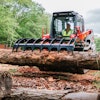


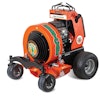

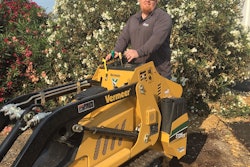
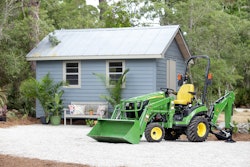
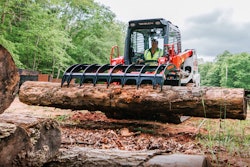

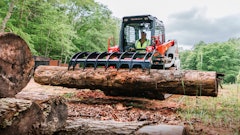




![Doosan Bobcat Wacker Neuson Stack 2ec Js Pb V6e[1]](https://img.greenindustrypros.com/mindful/acbm/workspaces/default/uploads/2025/12/doosan-bobcat-wacker-neuson-stack2ecjspbv6e1.CPyyz8ubHn.png?ar=16%3A9&auto=format%2Ccompress&bg=fff&fill-color=fff&fit=fill&h=135&q=70&w=240)


